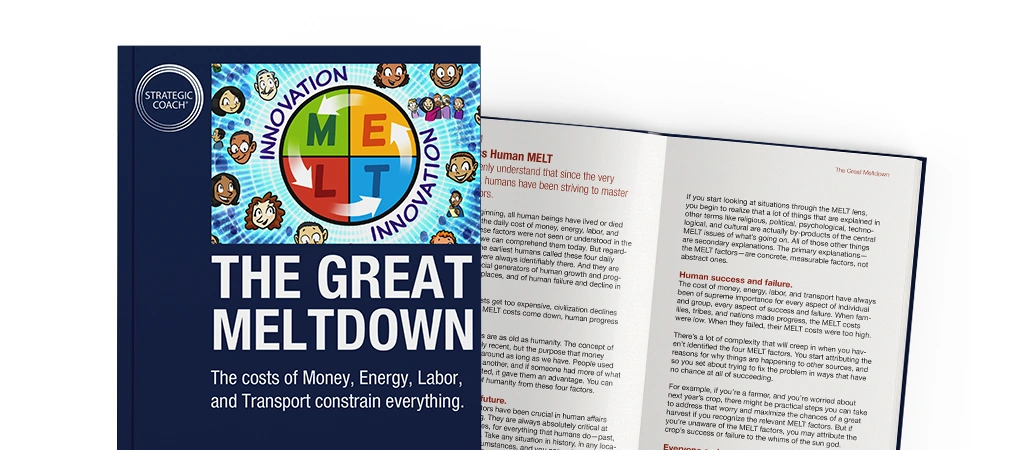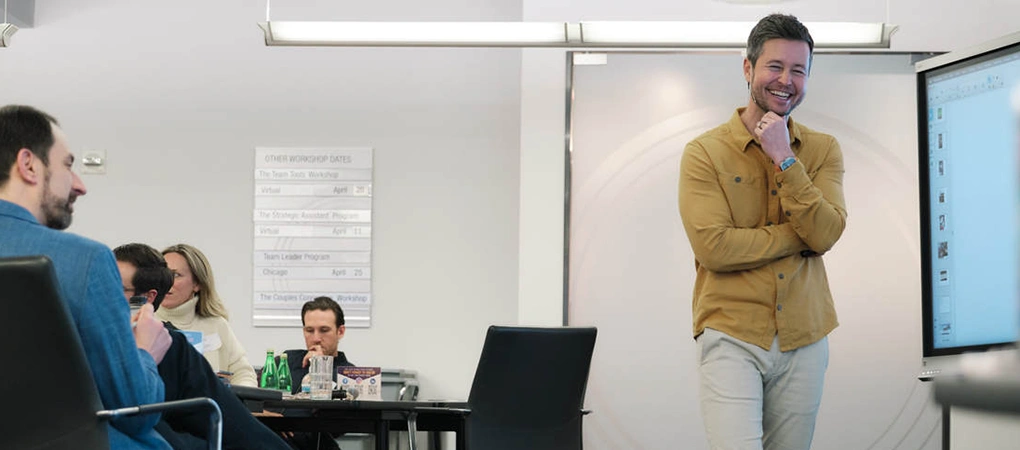The 3 Design Principles That Will Keep Your Business Relevant
Dan Sullivan

I’ve always been interested in business organization and structure, especially organizations that provide learning and transformation. Since we founded Strategic Coach over 30 years ago, I’ve looked to these organizations for examples of how to keep clients coming back.
One that I always look back to and that I was a part of myself is the Boy Scouts, which I participated in from the age of 10 till about 13. I loved being a Boy Scout, and I still have the Handbook For Boys that I received when I became a Scout.
This handbook is a complete layout of how Scouts progress from a Tenderfoot, the entry level when you first join the Scouts, to being an Eagle Scout, the highest possible designation.
I find the Boy Scouts organization interesting on many levels — how it came into existence, how it was organized, and how it kept Scouts in the program for four or five years.
A like-minded approach to keep clients coming back.
What I see when I look at the Boy Scouts is an organization that wants to keep its members engaged and growing over a long period of time, learning fundamental life skills that they can tap into throughout their lives.
That is exactly what I envisioned when we founded Strategic Coach. But how do you create an organization, especially one like ours based on a learning process, that will have longevity? More important, how do you keep clients coming back?
We have some clients who have been in The Strategic Coach Program for more than 30 years, since the first workshop I coached. They’ve come every quarter, every 90 days roughly, for 30 years. How do we build on this?
Key design principles.
These are the principles that I see as the foundation of a successful “learning” business that has built-in longevity:
-
Make it about them, not you. Design your structure and process for the people going through it, not for yourself. If your goal is to do a great job of creating value for those who are paying to be in your organization, then start with them as the organizing principle.
In our case, the first question is: What will make every workshop a memorable experience so the entrepreneur will immediately realize the importance of coming back 90 days later? And then, when it’s time to sign up for the next year, what will ensure that there is no question in their mind about continuing on in the Program?
Every quarter as we’re designing new workshops, the question I’m continually asking is: Is this about them, or is this about us? That’s the acid test. If we continue to create an experience that gets our clients excited about staying with us, that loyalty is what will create our success.
- Have a lasting impact. What we create at Strategic Coach has to transform our entrepreneurs’ lives when they leave their workshop. If we’re in touch with who they truly are in their businesses and personal lives and continually address that in a meaningful way, they will keep coming back.
- Give clients every reason to refer you. The experience our clients have at Strategic Coach, and the results they achieve by using our thinking tools and strategies, has to create change and progress in their businesses and lives that far exceeds what they thought possible. They’ll want to tell every entrepreneur who is important to them that Strategic Coach would be a great experience for them too.
These are the three business principles we’ve based the Strategic Coach structure and organization on, and it’s amazing to me still how closely they mesh with those of the Boy Scouts organization I experienced and admired in my youth.
Are you looking to package your unique value and provide your clients with a unique experience they can’t find anywhere else? Get your free copy of The Entrepreneur’s Guide To Value Creation.







